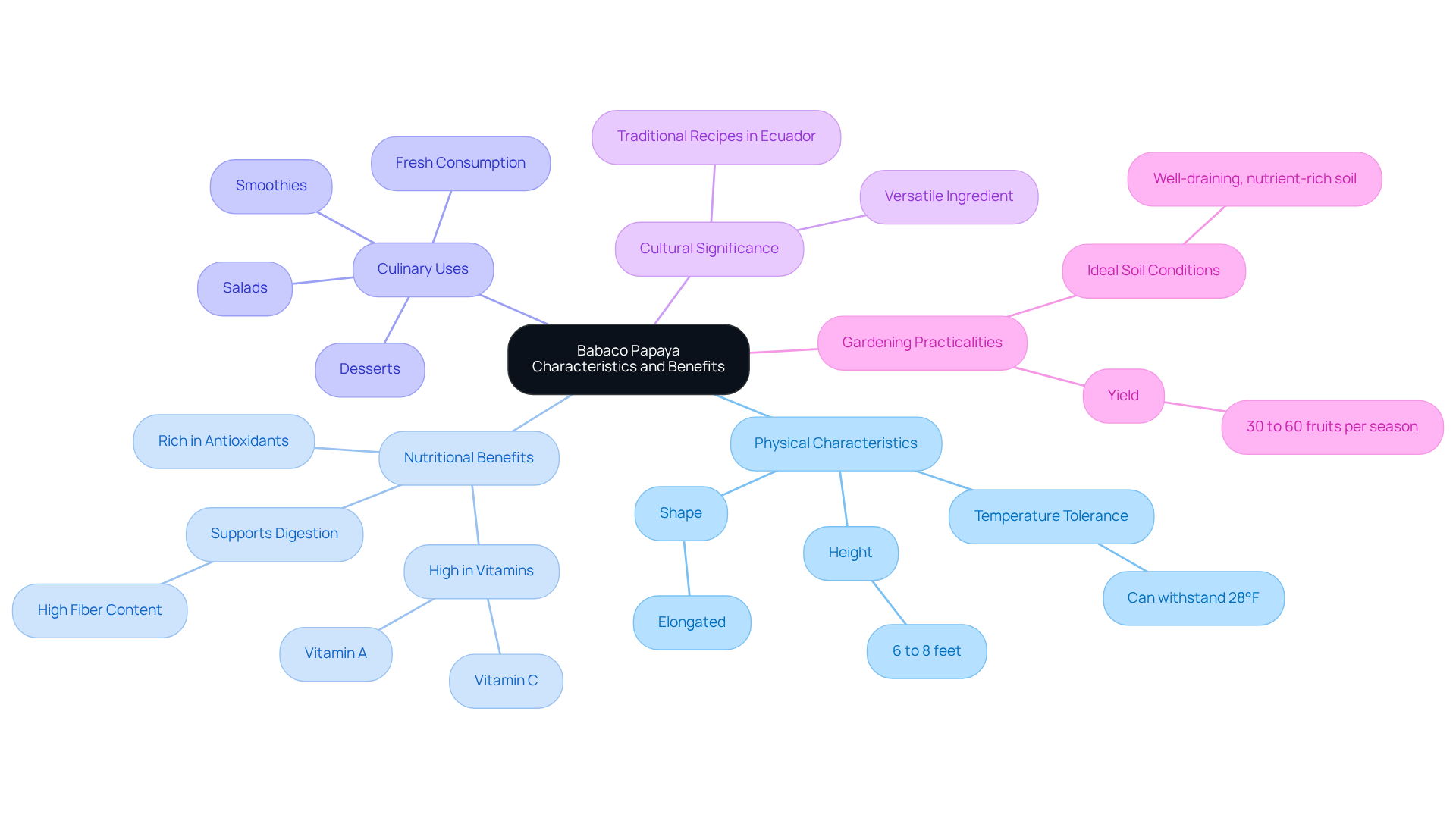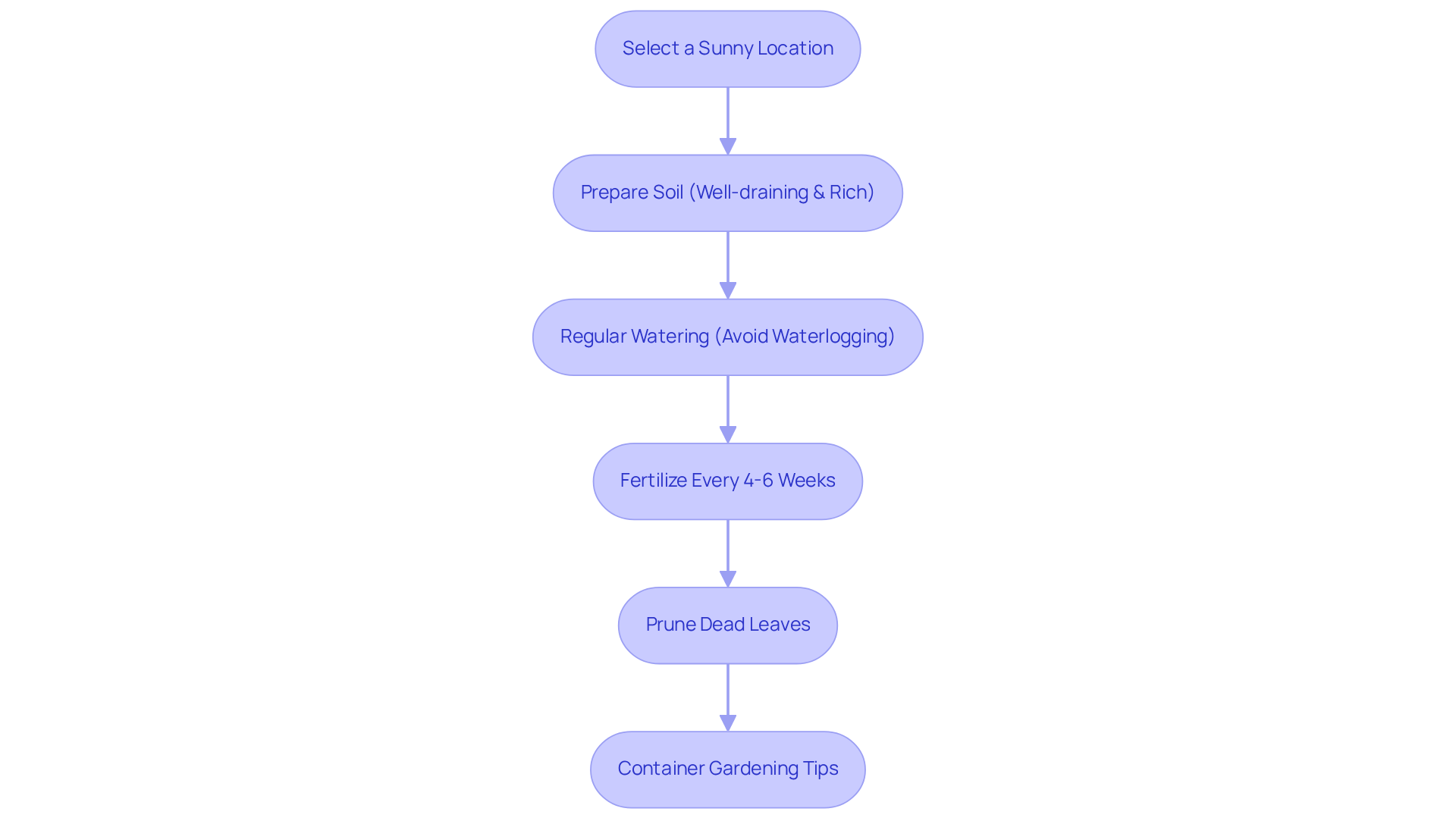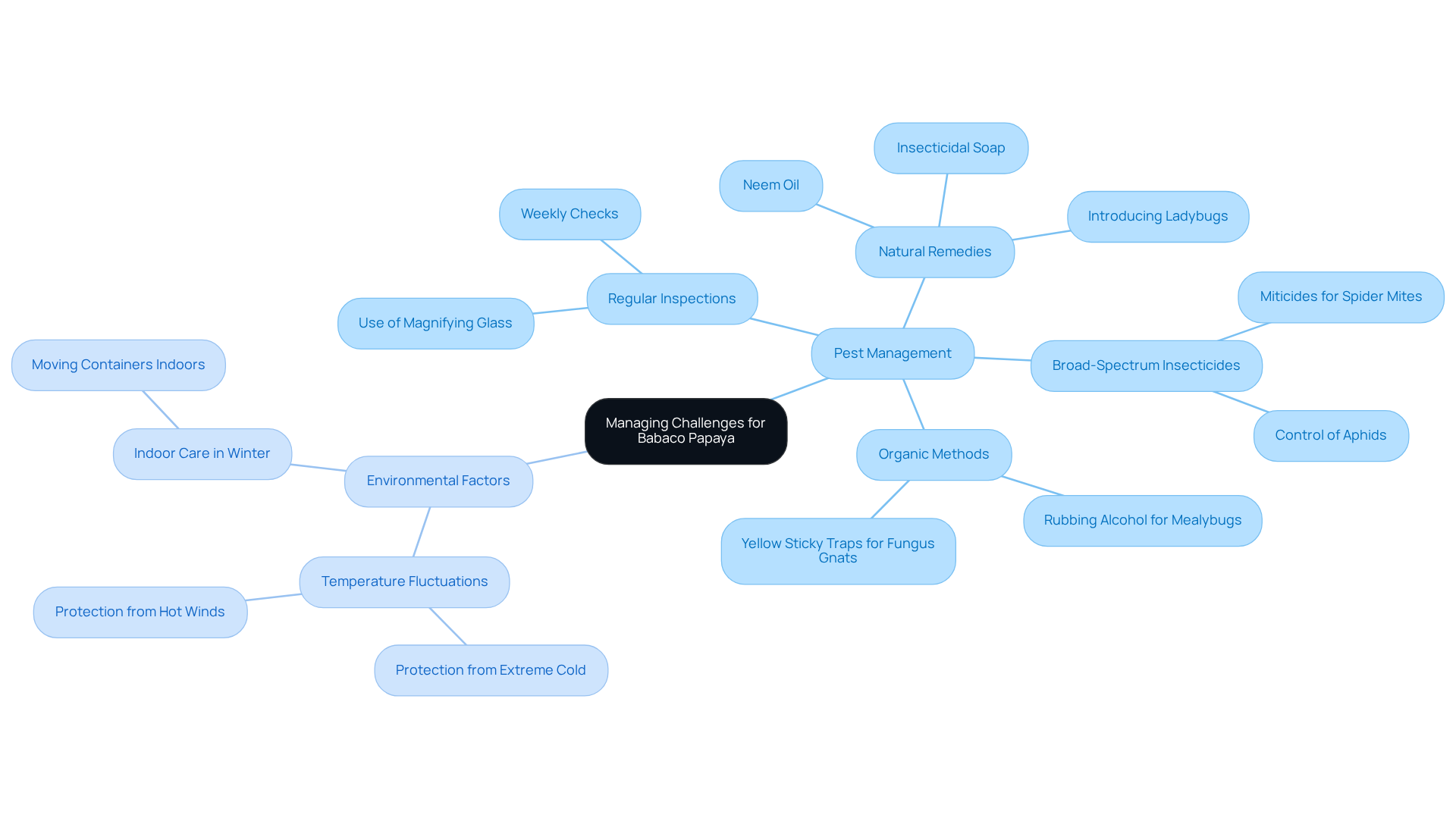The Babaco papaya is a unique tropical fruit celebrated for its vibrant flavor and remarkable health benefits, increasingly favored by home gardeners. This seedless delight thrives in diverse climates and produces a substantial harvest, making it not only a versatile culinary ingredient but also a nutritional powerhouse rich in vitamins and antioxidants.
However, cultivating this exotic plant entails specific challenges, including pest management and optimal care practices. What essential strategies can transform the Babaco papaya into a thriving addition to any garden?
1. Understand the Babaco Papaya: Characteristics and Benefits
The Vasconcellea × heilbornii, commonly referred to as the mountain variety, is a distinctive tropical fruit characterized by its elongated shape and vibrant flavor profile. Typically, it reaches heights of 6 to 8 feet and thrives in well-draining, nutrient-rich soil. This makes it an exceptional addition to Everglades Farm's , ideal for home gardeners looking for quick-yield tropical greenery. Notably, this fruit can withstand lower temperatures as low as 28°F, allowing it to thrive in a broader range of climates compared to traditional varieties.
This fruit is seedless and juicy, offering a delightful flavor reminiscent of a blend of pineapple, papaya, and strawberry, making it an appealing choice for any garden. Nutritionally, it is a powerhouse, rich in vitamins C and A, antioxidants, and dietary fiber. Its high vitamin C content not only enhances the immune system but also serves as a potent antioxidant, potentially lowering the risk of chronic diseases. Furthermore, the fiber content aids digestion, promoting gut health. Research indicates that the antioxidant activity of this tropical fruit increases as it ripens, making it an excellent option for fresh consumption and a beneficial addition to smoothies, salads, and desserts, enhancing both taste and nutritional value.
Case studies highlight the cultural significance of this fruit in Ecuador, where it is commonly used in traditional recipes and paired with various ingredients, showcasing its versatility in culinary applications. The rich phytochemical profile of this produce supports overall health and well-being, reinforcing its classification as a superfood. Additionally, this plant can yield between 30 to 60 fruits per season, making it a practical choice for home gardeners. As gardening enthusiasts delve into the joys of cultivating tropical fruits, this variety emerges as a nutritious and flavorful option that can flourish in diverse environments, aligning perfectly with Everglades Farm's commitment to offering a wide range of tropical fruit trees and professional-grade fertilizers for home gardening.

2. Cultivate Effectively: Best Practices for Growing Babaco Papaya
To grow the babaco papaya plant effectively, begin by selecting a sunny location that receives at least 6-8 hours of direct sunlight daily. Prepare the soil to ensure it is well-draining and rich in organic matter, ideally maintaining a pH between 6.5 and 7. Regular watering is crucial, particularly during dry spells, but be cautious to avoid waterlogging, as this plant is sensitive to excess moisture. Fertilize every 4-6 weeks with a balanced fertilizer to encourage healthy growth and fruiting. Pruning is also essential; remove dead leaves to enhance airflow and reduce the risk of disease.
For container gardening, opt for a pot with drainage holes and utilize a high-quality potting mix to facilitate drainage. Notably, a papaya plant can yield between 30 and 60 fruits annually, with each fruit averaging 8 to 10 inches in length and weighing between 1 to 2 pounds. Additionally, this fruit can withstand temperatures as low as 28°F (-2°C), making it adaptable to various climates. The produce is versatile and can be enjoyed fresh, blended into smoothies, or due to its high papain content.
Case studies indicate that successful cultivation of papaya relies on these practices, ensuring robust growth and abundant fruit production. By following these guidelines, gardeners can maximize their yield and enjoy the benefits of this tropical fruit.

3. Overcome Challenges: Managing Pests and Environmental Factors
The babaco papaya plant is particularly vulnerable to pests such as spider mites and aphids, which can inflict significant damage if not addressed promptly. Regular inspections are essential; look for indicators like yellowing leaves or webbing. Upon detection, such as insecticidal soap or neem oil can effectively manage these pests. Additionally, broad-spectrum insecticides can help control aphid populations, while organic methods include introducing ladybugs. Maintaining a clean environment around the plants by removing dead leaves and debris can significantly reduce potential pest habitats.
Environmental factors, particularly temperature fluctuations, are critical to the growth of this fruit. Protect your plants from extreme cold and hot winds, as these conditions can hinder their development. These varieties of the babaco papaya plant can tolerate temperatures as low as approximately 28°F, allowing them to withstand various environmental challenges. For those growing this fruit in containers, it is advisable to move the plants indoors during colder months to keep them within optimal temperature ranges. By implementing these strategies, you can foster healthier fruit and enhance its resilience against pests.

4. Maintain Health: Care and Maintenance for Optimal Growth
To ensure the health and vitality of your Babaco papaya, it is essential to establish a consistent care routine that prioritizes moisture management and nutrient supply. Regularly water the greenery, keeping the soil consistently moist while avoiding waterlogging, which can lead to root rot. Applying a layer of mulch around the base not only aids in moisture retention but also inhibits weed growth, fostering a healthier environment for your vegetation.
During the growing season, fertilize monthly with a balanced NPK fertilizer, specifically a 10-10-10 ratio. Adjust the frequency based on the organism's response to nutrients. Watch for , such as yellowing leaves, which may indicate a lack of nitrogen, magnesium, or iron, and modify your fertilization schedule accordingly. Additionally, rotating the planting location each season can prevent soil depletion and minimize disease risks, allowing the soil to recover and reducing the buildup of pathogens.
Regular inspections for pests and diseases are crucial; prompt action can mitigate potential issues and ensure your Babaco thrives. Maintaining good air circulation around the plant is also essential, as it helps reduce the risk of diseases such as powdery mildew.
Conclusion
The Babaco papaya plant presents a unique opportunity for gardeners to cultivate a delicious and nutritious tropical fruit, notable for its resilience and flavor. By understanding essential cultivation strategies, home gardeners can maximize the potential of this extraordinary plant, ensuring a fruitful harvest that enriches both their gardens and their diets.
Key insights highlight the importance of:
- Selecting the right location
- Maintaining optimal soil conditions
- Implementing effective pest management strategies
Regular care routines, including proper watering, fertilization, and pruning, are crucial for supporting the plant's growth and ensuring it thrives in various environmental conditions. The Babaco papaya's ability to produce abundant fruit makes it a practical and rewarding choice for those looking to diversify their home gardens.
Ultimately, embracing the cultivation of the Babaco papaya enhances personal gardening experiences and contributes to a healthier lifestyle through its rich nutritional benefits. By applying these best practices, gardeners can enjoy the delightful flavors and health advantages of this tropical superfood while fostering a deeper connection with nature.
Grow Your Own Tropical Paradise with Babaco Papaya!
Start your gardening journey today and savor the delicious rewards of homegrown fruit
🛒 Buy Babaco Papaya Plant
👉🏻 Explore Papaya trees for sale
Frequently Asked Questions
What is the Babaco Papaya, and what are its characteristics?
The Babaco Papaya, scientifically known as Vasconcellea × heilbornii, is a tropical fruit characterized by its elongated shape and vibrant flavor profile. It typically grows to heights of 6 to 8 feet and thrives in well-draining, nutrient-rich soil.
What climates can the Babaco Papaya tolerate?
The Babaco Papaya can withstand lower temperatures down to 28°F, allowing it to thrive in a broader range of climates compared to traditional papaya varieties.
What is the flavor profile of the Babaco Papaya?
The Babaco Papaya is seedless and juicy, with a delightful flavor reminiscent of a blend of pineapple, papaya, and strawberry.
What are the nutritional benefits of the Babaco Papaya?
The Babaco Papaya is rich in vitamins C and A, antioxidants, and dietary fiber. Its high vitamin C content enhances the immune system and serves as a potent antioxidant, while the fiber aids digestion and promotes gut health.
How does the antioxidant activity of the Babaco Papaya change as it ripens?
Research indicates that the antioxidant activity of the Babaco Papaya increases as it ripens, making it an excellent option for fresh consumption and beneficial in smoothies, salads, and desserts.
What cultural significance does the Babaco Papaya have in Ecuador?
In Ecuador, the Babaco Papaya is commonly used in traditional recipes and paired with various ingredients, showcasing its versatility in culinary applications.
How many fruits can a Babaco Papaya plant yield in a season?
A Babaco Papaya plant can yield between 30 to 60 fruits per season, making it a practical choice for home gardeners.
Why is the Babaco Papaya classified as a superfood?
The rich phytochemical profile of the Babaco Papaya supports overall health and well-being, reinforcing its classification as a superfood.




0 comments